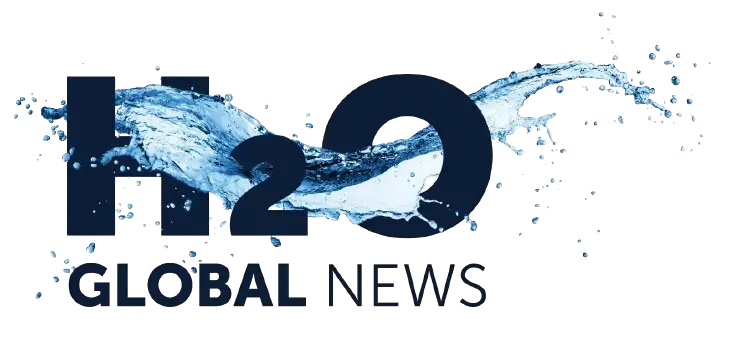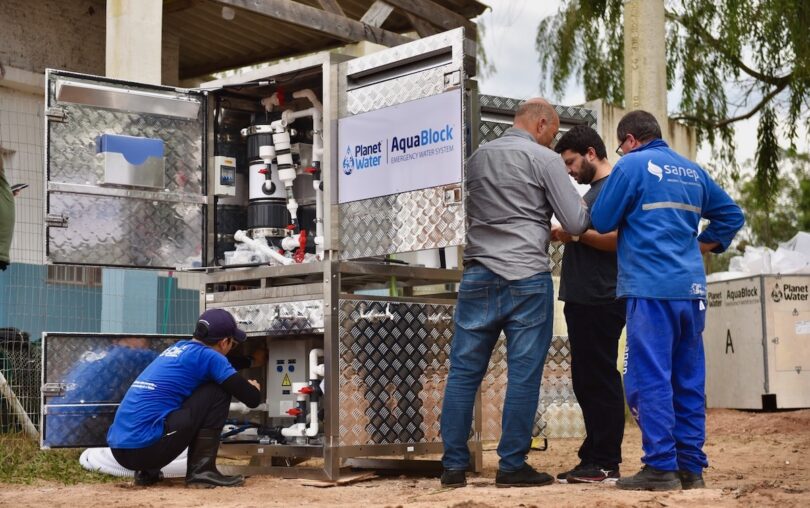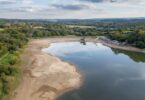The genesis for Planet Water Foundation was the 2004 Indian Ocean Tsunami. Planet Water’s founder, Mark Steele, was at that time working for U.S.-based ITT Industries, overseeing the company’s operations in China, and as part of the company’s CSR work, took on the role of leading the company’s response to the devastation caused by the tsunami in Sri Lanka. This had a profound impact and led to Mark’s desire to focus his efforts on addressing issues around access to safe water and, ultimately, founding Planet Water Foundation in 2009.
From here, Mark designed and created the AquaTower water filtration system, which has since been deployed in over 2,000 communities around the world, particularly in underserved areas. Along with this, subsequent water filtration solutions were designed for rapid response in the wake of natural disasters where access to safe drinking water is of critical, urgent need.
Planet Water’s AquaTower Technology
The AquaTower was developed to be a robust water filtration system which can operate in areas where infrastructure is very basic or lacking entirely. The system is designed to use minimal electricity, utilising a small electric pump. In some cases, a treadle pump brings the water source to the tank, and from there, the system functions by gravity. The AquaTower pulls in water from sources such as ponds and borewells, which are usually quite badly contaminated with faecal bacteria or agricultural waste.
Over the years, based on the observations made through Planet Water’s project sustainability program and feedback from the communities its supported, they have continually enhanced the design of the system – from incorporating anodized aluminium and marine grade stainless steel to form the system’s key structural elements, to continued enhancements in filtration process and technology, to the addition of handwashing infrastructure with liquid soap dispensers.
Planet Water have also innovated with new solutions, like its AquaBlock Emergency Water Filtration System, which was explicitly designed in the context of disaster response. These turnkey systems are designed to be rapidly deployable in evacuation centres following natural disasters and provide enhanced filtration capabilities to serve larger numbers of people.
Disaster Response Strategy & Long-Term Water Solutions
To expedite their response process, they have launched the Planet Water Foundation Disaster Response Alliance, a programme that enables companies to pre-fund its disaster response work. Planet Water then provides its program partners with the option to opt in or out of any response they undertake, allowing them to apply funding accordingly. This allows Planet Water to position its AquaTower and AquaBlock systems in logistics hubs around the world, enabling Planet Water to respond quickly in the event of a disaster.
In terms of how they respond, Planet Water tailors its response based on the unique circumstances of each event. Every event presents its own set of challenges. For example, in Asheville, North Carolina, following Hurricane Helene, whilst the water systems were seriously affected, most community members were still able to stay in their homes. As such, Planet Water focused on positioning its AquaBlock systems in locations that were easily accessible to residents who drove by car to fill containers with safe drinking water. These locations were either in centres where non-potable water was being trucked in, or next to creeks, which they would use as source water. By contrast, following the earthquake in Myanmar earlier this year, many residents had lost their homes and had relocated to tented camps. As such, Planet Water focused its deployments on those camps.
With all of Planet Water’s responses, the team plans to provide ongoing support as needed. For example, in Asheville, its AquaBlock systems were in the field for three months, until the municipal water supplies were fully restored and deemed safe to drink. In Myanmar, many of the relocation camps were set up in schools, and so its AquaTowers will have a second life providing safe water to the school once the camps are closed.
Regional Focus and Expansion
Planet Water’s school-based projects are focused on Asia and Latin America. In its operational countries in these regions, there is still a lot of support needed in terms of expanding access to safe drinking water. As such, Planet Water are not actively looking to expand into new regions due to the high investment costs required to enter a new country.
Planet Water’s Disaster Response work is global, though. For example, they have supported responses to disasters in Africa (Morocco and Libya), Europe (Ukraine and Turkey), and the USA. Suppose a disaster occurs in a country without team members. In that case, Planet Water has a detailed checklist that they run through to assess feasibility – i.e., can Planet Water find a local deployment partner, ship its water filtration systems into the country, and mobilise quickly, among other factors.
How Planet Water Hopes to Meet Changing Global Water Challenges
Planet Water are constantly looking at how it can leverage new technologies to enhance the impact it makes. They are currently field testing a new version of their AquaBlock emergency water filtration system and exploring ways to provide beneficiaries in disaster response scenarios with receptacles to collect and store the safe water they collect from the AquaBlock. Planet Water will also be launching an exciting new solution later this year to be added to its Disaster Response offering. Stay tuned for more information on that!
For more information on how to support Planet Water Foundation, please visit https://planet-water.org/ways-to-give.






